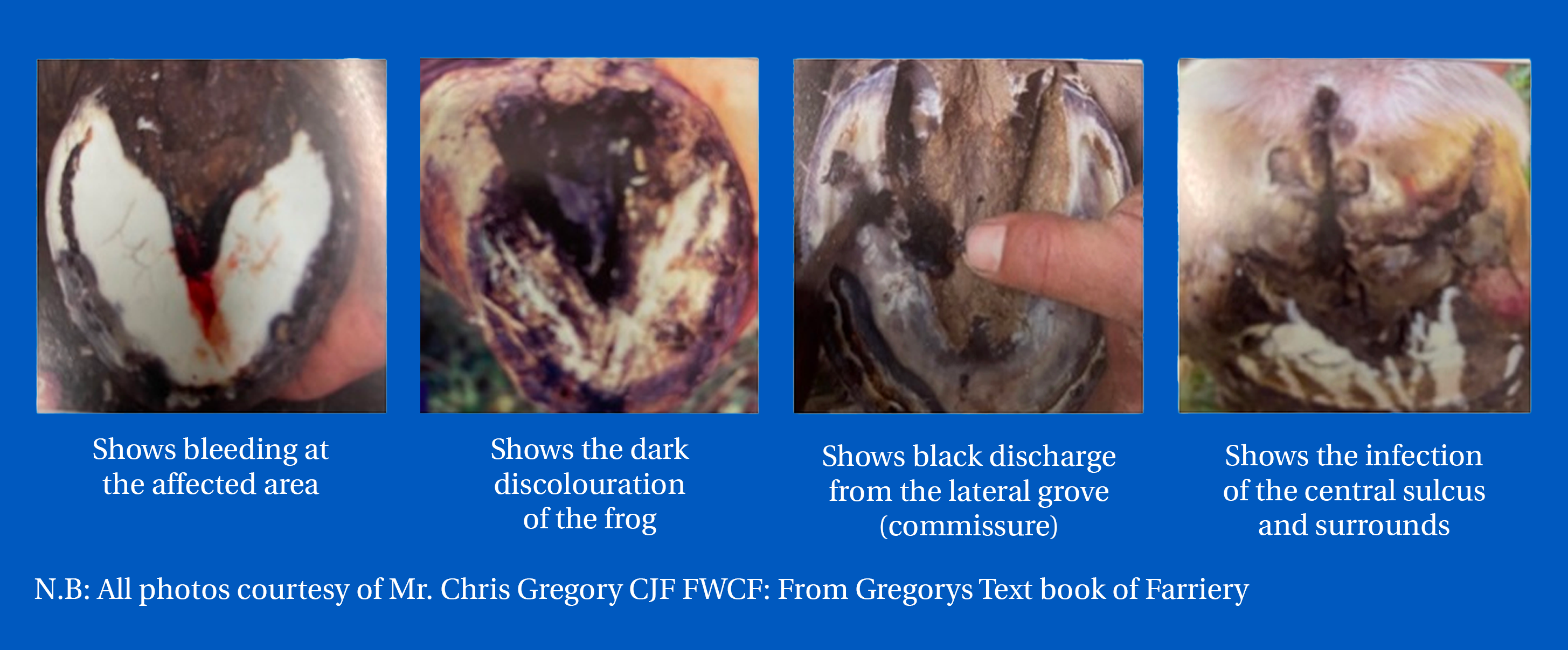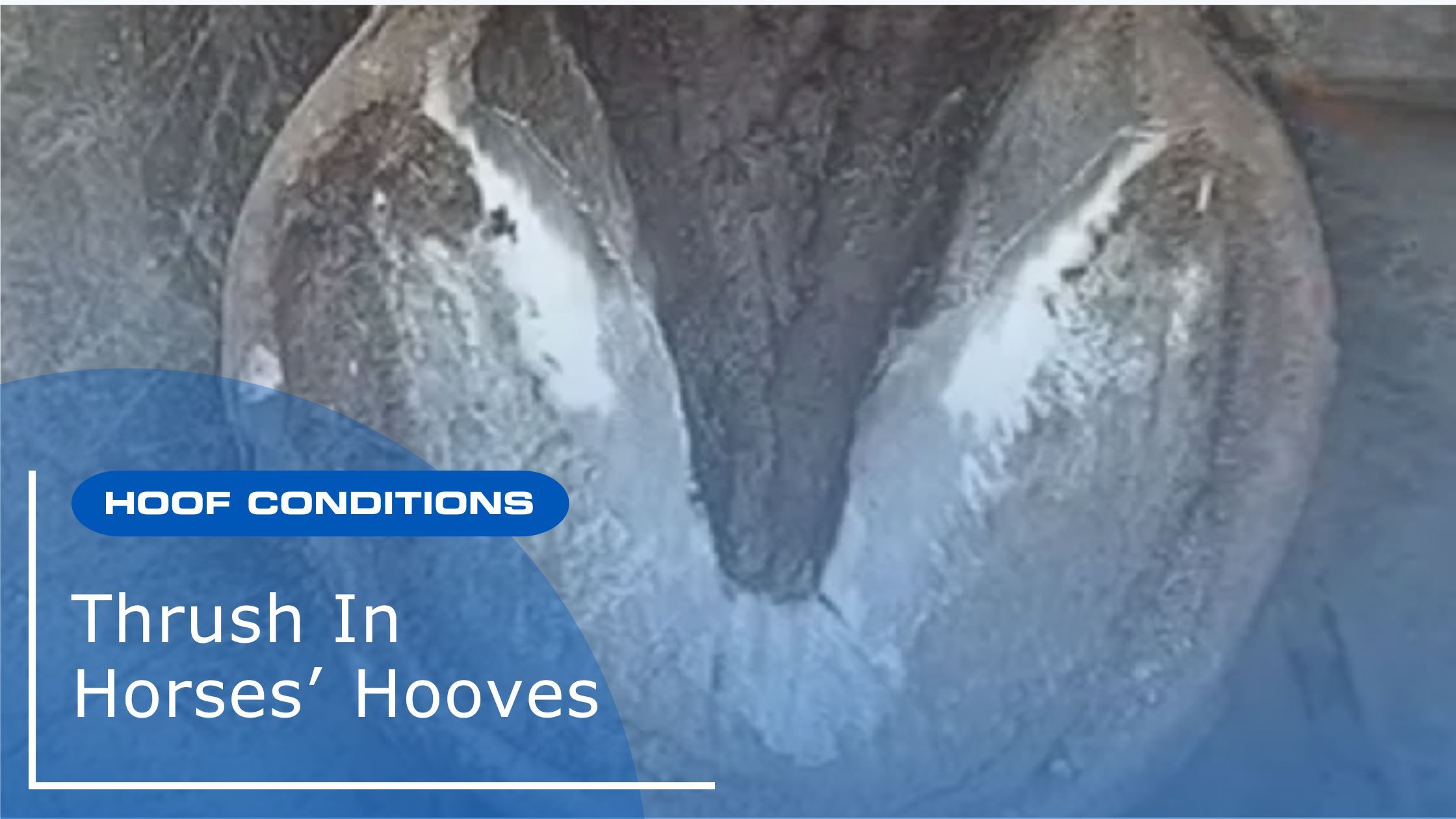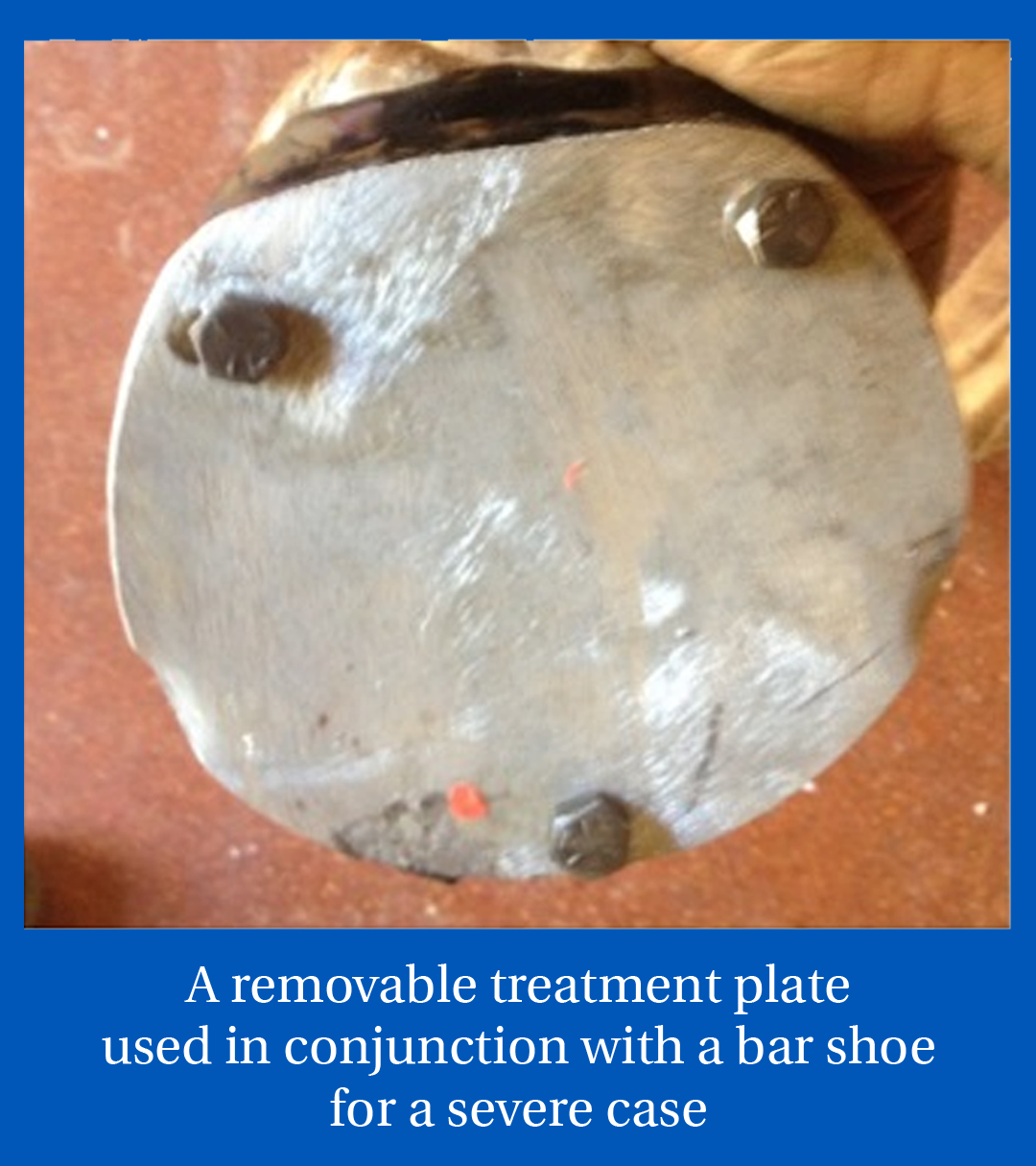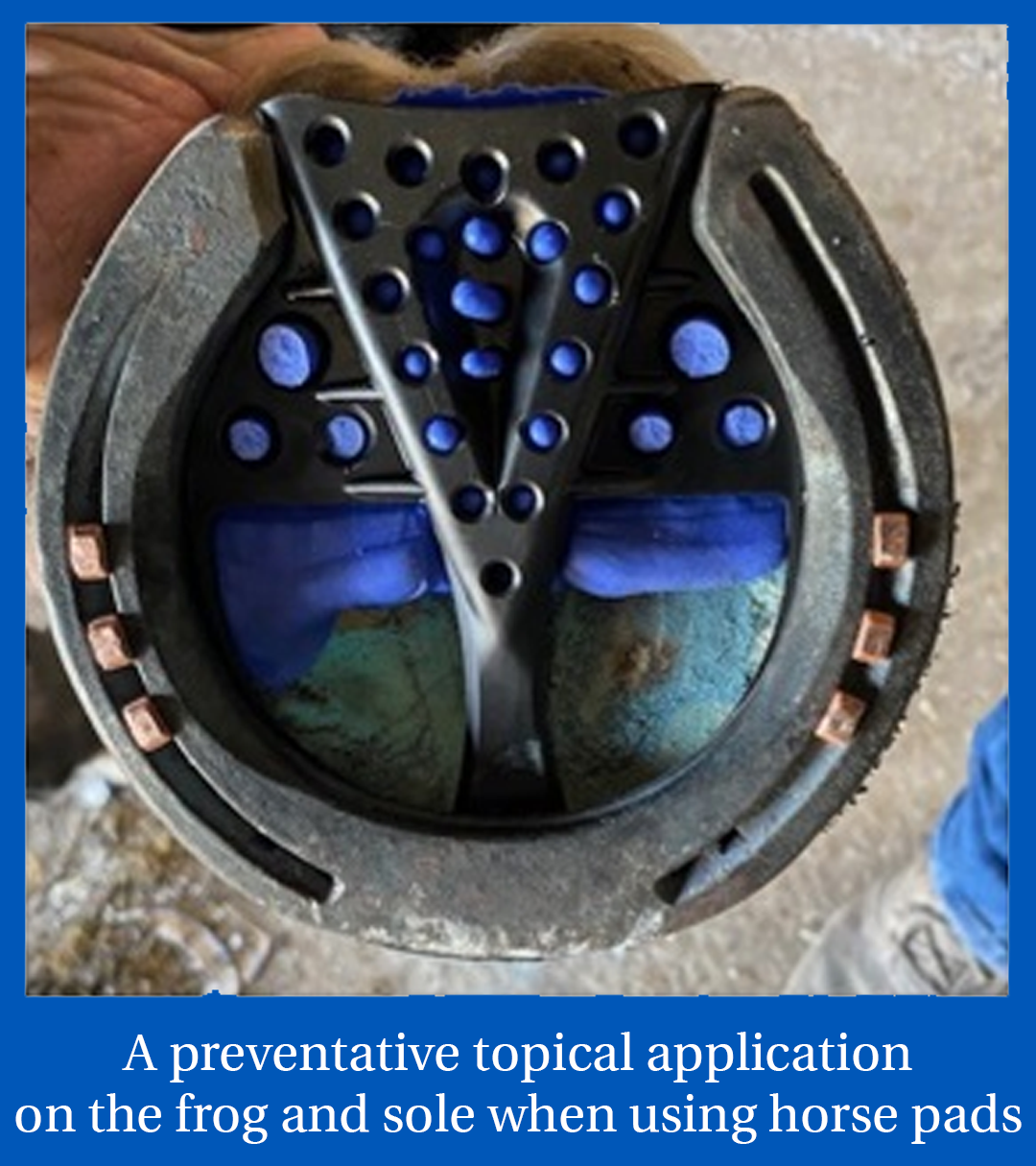Thrush in Horses Hooves
In this piece we’ll be exploring the issue of thrush in horses’ hooves. We’ll examine what the issue is, how it presents, and how to treat it, as well as some common misconceptions about the condition.
What Is Thrush?
Thrush is a condition that affects parts of the hoof anatomy such as the horse’s frog and surrounding areas like the lateral groves (commissures) and sulci of the frog. It can also extend to other areas of the hoof, such as the bulbs. Horses afflicted by this condition can experience pain when the affected area is touched.
In short, it is an infestation of these areas by a microbial anaerobic bacteria and/or a combination of bacteria, that affect the frog its surrounds. Presentation wise, thrush in horses’ hooves is characterised by a dark discharge and an unpleasant smell from the affected area. It does not usually cause lameness, but if left untreated, it can cause the frog to become atrophied (waste away or shrink) and in neglected cases, lameness can occur. In severe cases, the horse’s frog can suffer from infection and bleeding may be present.
Susceptibility To Thrush
It has been my experience that horses with deep lateral groves (commissars) such as club feet, or with atrophied frogs and/or sheered heels, may be more susceptible to developing this complaint.
I believe the reason for this is the similarity that thrush shares with seedy toe. These particular types of feet provide the anaerobic bacteria with a more optimal place to grow, as due to the lack of oxygen the bacterial microbes flourish.
Common Misconceptions About The Cause Of Thrush In Horses’ Hooves
It is often suggested that thrush occurs in horses experiencing a lack of regular and proper care. Therefore, the manifestation of thrush is commonly blamed on:
- Poor stable management e.g. loose boxes that are not regularly cleaned or mucked out
- Lack of exercise
- Horses living in wet or unsanitary conditions
- Lack of regular hoof care e.g. not picking out the hooves
- Irregular shoeing or trimming intervals
The Actual Cause
In reality, thrush can occur in horses that are regularly cared for and kept in good conditions as well. This suggests that it should not always be thought of as a management or environmental problem.
In fact, recent research has shown that if the anaerobic bacterium known as Fusobacterium Necrophorum (FN) is present, this bacterium alone will cause thrush; Ref: The Hoof of The Horse by DR Simon Curtis PhD, FWCF, Hon Assoc RVCS
Additionally, thrush can often affect one foot alone, with the other feet being free of the complaint. This may indicate that some horses / feet are more susceptible to this complaint than others.

Treatment For Thrush In Horses’ Hooves
Thrush in horses’ hooves can usually be treated by the farrier trimming away the affected area. This exposes the bacteria to oxygen and will kill the anaerobic microbes. This should be followed up by the owner applying a topical ointment between farrier visits and ensuring that the area is cleaned and treated regularly.
There are many topical ointments on the market for the prevention and treatment of thrush, such as Comfort Mix Thrush Treatment or Hoof-it Hoof Hygiene. Mild cases rarely cause any problems and respond well to treatment.
Handling Severe Cases
Severe cases affecting sensitive tissue should be treated like a hoof abscess and may require therapeutic shoes, bar shoes or a treatment plate.
In cases where sensitive or epidermal tissue is exposed, it is prudent to seek assistance from a veterinarian. Usually in such cases, metronidazole paste is prescribed and used in conjunction with a treatment plate.
Please Note: (metronidazole) must be prescribed by your vet.
Above: In this case, sensitive tissue was exposed so the treatment plate was adopted as well as metronidazole paste which was prescribed by the attending Veterinarian to normalize the condition.
How To Prevent Thrush In Horses’ Hooves
The age-old saying prevention is better than a cure certainly holds true in the case of thrush in horses’ hooves. There are multiple aspects to preventing this hoof condition including:
Owner Hoofcare
Properly cleaning out the feet (daily when possible) and regular farrier visits help in the prevention of not only thrush, but also other hoof conditions. This should always be your starting point. Feeding your horse with a supplement like Right Balance is also beneficial to hoof health.
Environmental Management
Ensuring clean and suitable stabling conditions for the horse and trying to reduce wet muddy conditions were possible, will also play a part in prevention. Although it is not a standalone cause of thrush in horses’ feet, climate can contribute to many hoof concerns, so it is best to manage the conditions your horse is exposed to wherever possible.
Farrier Hoofcare
Regular trims and proper hoofcare from your farrier will help keep your horse in top condition. They may use products such as hoof pads or therapeutic shoes in the course of this care. When using hoof pads, I usually apply a topical dressing under the pad, between the dental impression material and the hoof. This creates a comprehensive hoofcare solution that functions as a preventative measure and helps ensure the sole and frog are pristine on my return visit.
Throughout my career as a farrier in Australia, I have not seen many thrush cases due to unsanitary conditions. I have, however, seen this condition in horses with poor foot shape and function, such as club feet with deep lateral groves as well as deep central sulci.
I am sure that dry climates in Australia also help to reduce the cases of thrush, but in a country as large as Australia there are always wet and humid conditions somewhere, and this condition will thrive in such climates.
Luckily, as I said earlier, thrush does not often occur or cause a big problem, and it is very susceptible to treatment if it is present.
I hope this article has shed some light on this condition.
If you have any questions or wish to know more about a particular hoof or horse related problem or topic, send us an email at online.australia@mustad.com and I will try to answer your questions in one of our future blogs.
Until Next Time; All the Best
Dean Lewis AWCF



